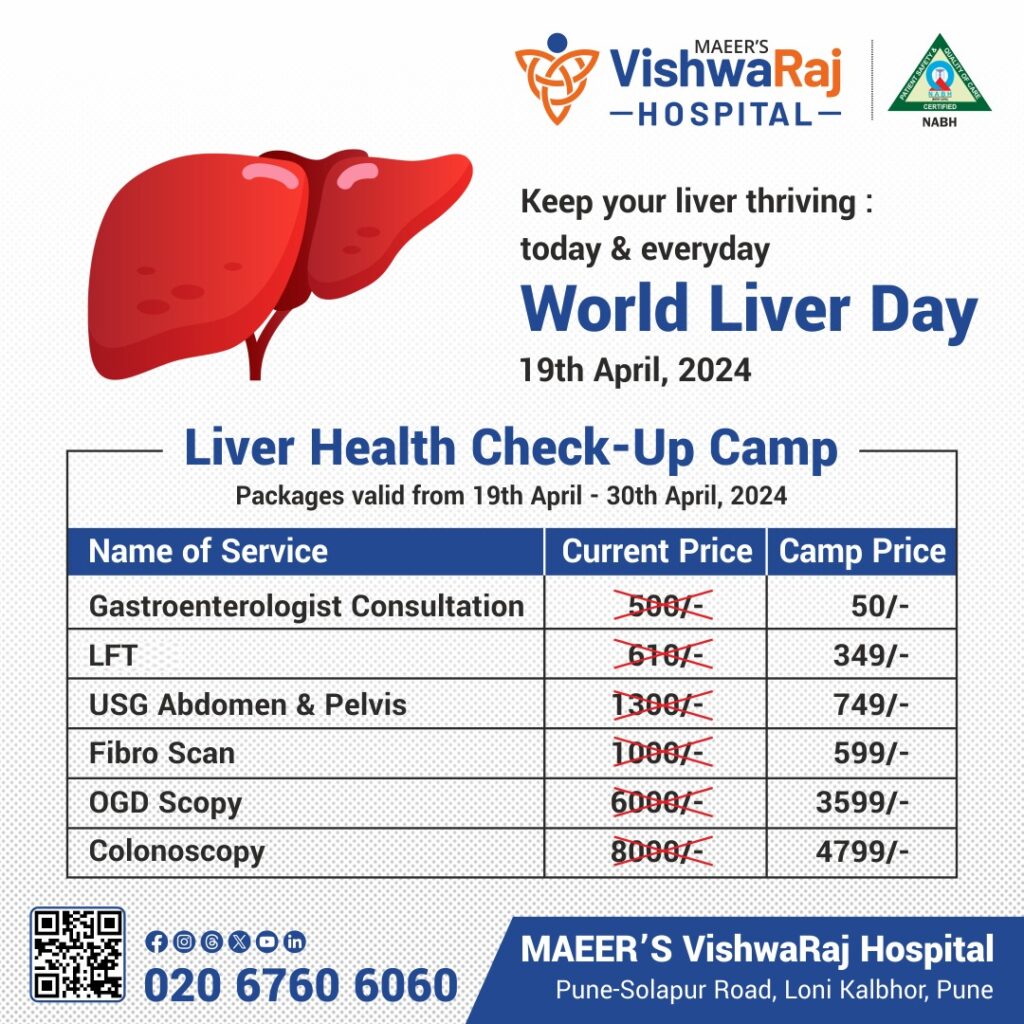Some quick content to read
The novel coronavirus continues to wreak havoc across the globe, it comes as no surprise that the people who comprise of our best defence to contain and mitigate this epidemic also face the highest risk of becoming infected themselves. Be it our healthcare workers, the police and all those working for ‘essential’ services — they all run the risk of being exposed to the virus. Till date, countless frontline workers across the globe have shouldered this burden, and will continue to do so in the foreseeable future unless the virus is controlled.
We’ve all read stories of the shortage of surgical masks and other personal protective equipment which increase chances of contamination. But that’s not all. When our frontline workers stand to get infected, it leads to an increased burden on the already present, limited workers. As a part of the medical fraternity, I say this with confidence that we’re doing all we can to protect our family at the hospital.
From revising our protocols to increasing the supply of protective gear and even rotating our staff to minimise exposure, we’ve gone the extra mile. However, that’s not enough. We need you to step in and flatten the curve. By staying home, you’ll help lessen the burden on an already overwhelmed workforce. You’ll help curb the spread of coronavirus.
On behalf of the healthcare fraternity, we urge you to stay home and stay safe. It’s the only way we can beat this challenge together!
The real heroes are here…
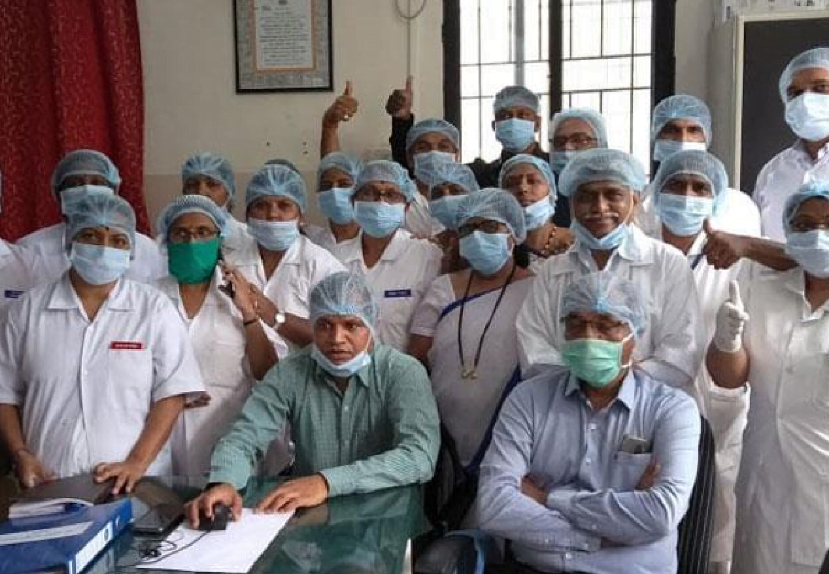

The term “frontline workers” often conjures images of doctors in Hazmat suits and soldiers in uniform. But during the coronavirus outbreak, workers across a vast array of industries have found themselves essential parts of the machine that keeps the world in motion, required to do their jobs despite great risk—whether hog farm employees or bus drivers, mental health counselors or police officers. Here, as part of TIME’s new issue, frontline workers of all types share their triumphs and fears in their own voices.
blogTemplate
By adminNovember 30, 20207 min read
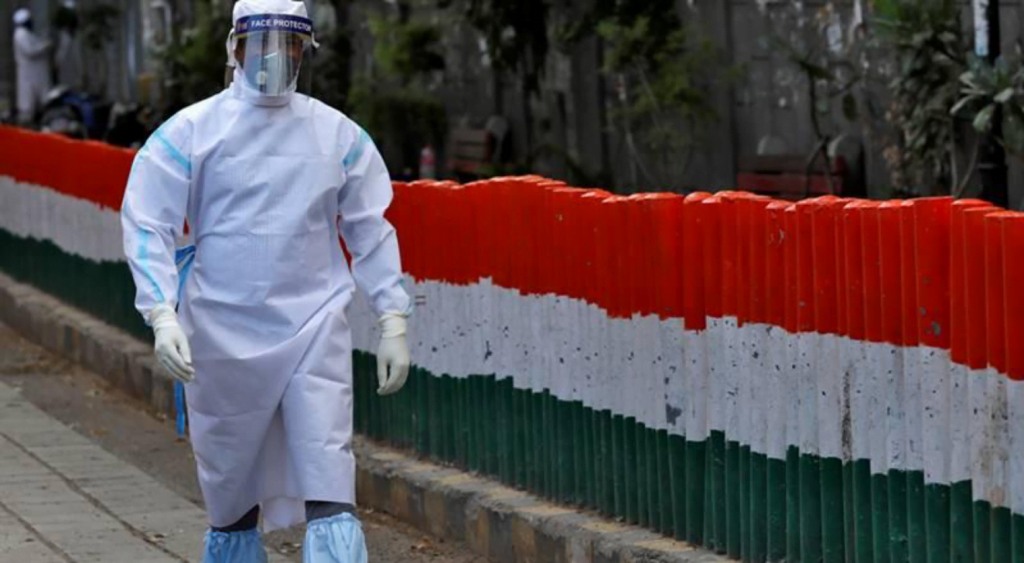








Some quick content to read
When would I need a cardiologist? | What does cardiology involve?
Choosing a cardologist The Country Won’t Work Without Them. Stories of People Putting Their Lives on the Line to Help Others During Coronavirus
The novel coronavirus continues to wreak havoc across the globe, it comes as no surprise that the people who comprise of our best defence to contain and mitigate this epidemic also face the highest risk of becoming infected themselves. Be it our healthcare workers, the police and all those working for ‘essential’ services — they all run the risk of being exposed to the virus. Till date, countless frontline workers across the globe have shouldered this burden, and will continue to do so in the foreseeable future unless the virus is controlled.
We’ve all read stories of the shortage of surgical masks and other personal protective equipment which increase chances of contamination. But that’s not all. When our frontline workers stand to get infected, it leads to an increased burden on the already present, limited workers. As a part of the medical fraternity, I say this with confidence that we’re doing all we can to protect our family at the hospital.
From revising our protocols to increasing the supply of protective gear and even rotating our staff to minimise exposure, we’ve gone the extra mile. However, that’s not enough. We need you to step in and flatten the curve. By staying home, you’ll help lessen the burden on an already overwhelmed workforce. You’ll help curb the spread of coronavirus.
On behalf of the healthcare fraternity, we urge you to stay home and stay safe. It’s the only way we can beat this challenge together!
The real heroes are here…









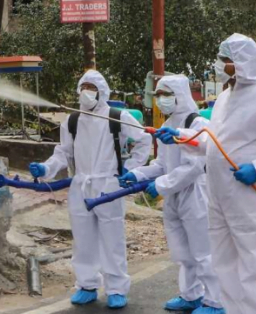








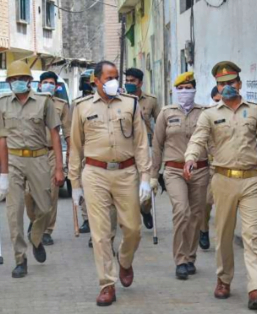








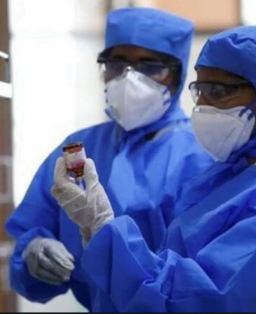








The term “frontline workers” often conjures images of doctors in Hazmat suits and soldiers in uniform. But during the coronavirus outbreak, workers across a vast array of industries have found themselves essential parts of the machine that keeps the world in motion, required to do their jobs despite great risk—whether hog farm employees or bus drivers, mental health counselors or police officers. Here, as part of TIME’s new issue, frontline workers of all types share their triumphs and fears in their own voices.
blogTemplate
By adminNovember 30, 20207 min read









Some quick content to read
When would I need a cardiologist? | What does cardiology involve?
Choosing a cardologist
The Country Won’t Work Without Them. Stories of People Putting Their Lives on the Line to Help Others During Coronavirus
The novel coronavirus continues to wreak havoc across the globe, it comes as no surprise that the people who comprise of our best defence to contain and mitigate this epidemic also face the highest risk of becoming infected themselves. Be it our healthcare workers, the police and all those working for ‘essential’ services — they all run the risk of being exposed to the virus. Till date, countless frontline workers across the globe have shouldered this burden, and will continue to do so in the foreseeable future unless the virus is controlled.
We’ve all read stories of the shortage of surgical masks and other personal protective equipment which increase chances of contamination. But that’s not all. When our frontline workers stand to get infected, it leads to an increased burden on the already present, limited workers. As a part of the medical fraternity, I say this with confidence that we’re doing all we can to protect our family at the hospital.
From revising our protocols to increasing the supply of protective gear and even rotating our staff to minimise exposure, we’ve gone the extra mile. However, that’s not enough. We need you to step in and flatten the curve. By staying home, you’ll help lessen the burden on an already overwhelmed workforce. You’ll help curb the spread of coronavirus.
On behalf of the healthcare fraternity, we urge you to stay home and stay safe. It’s the only way we can beat this challenge together!
The real heroes are here…




































The term “frontline workers” often conjures images of doctors in Hazmat suits and soldiers in uniform. But during the coronavirus outbreak, workers across a vast array of industries have found themselves essential parts of the machine that keeps the world in motion, required to do their jobs despite great risk—whether hog farm employees or bus drivers, mental health counselors or police officers. Here, as part of TIME’s new issue, frontline workers of all types share their triumphs and fears in their own voices.
blogTemplate
By adminNovember 30, 2020









Some quick content to read
When would I need a cardiologist? | What does cardiology involve?
Choosing a cardologist The Country Won’t Work Without Them. Stories of People Putting Their Lives on the Line to Help Others During Coronavirus
The novel coronavirus continues to wreak havoc across the globe, it comes as no surprise that the people who comprise of our best defence to contain and mitigate this epidemic also face the highest risk of becoming infected themselves. Be it our healthcare workers, the police and all those working for ‘essential’ services — they all run the risk of being exposed to the virus. Till date, countless frontline workers across the globe have shouldered this burden, and will continue to do so in the foreseeable future unless the virus is controlled.
We’ve all read stories of the shortage of surgical masks and other personal protective equipment which increase chances of contamination. But that’s not all. When our frontline workers stand to get infected, it leads to an increased burden on the already present, limited workers. As a part of the medical fraternity, I say this with confidence that we’re doing all we can to protect our family at the hospital.
From revising our protocols to increasing the supply of protective gear and even rotating our staff to minimise exposure, we’ve gone the extra mile. However, that’s not enough. We need you to step in and flatten the curve. By staying home, you’ll help lessen the burden on an already overwhelmed workforce. You’ll help curb the spread of coronavirus.
On behalf of the healthcare fraternity, we urge you to stay home and stay safe. It’s the only way we can beat this challenge together!
The real heroes are here…




































The term “frontline workers” often conjures images of doctors in Hazmat suits and soldiers in uniform. But during the coronavirus outbreak, workers across a vast array of industries have found themselves essential parts of the machine that keeps the world in motion, required to do their jobs despite great risk—whether hog farm employees or bus drivers, mental health counselors or police officers. Here, as part of TIME’s new issue, frontline workers of all types share their triumphs and fears in their own voices.
Related Read
edit post
Blogs
November 30, 2020
Coronavirus: Frontline Workers Lead The Way
VishwaRaj Hospital prides itself in providing the best services for the most critical departments.
Real Heroes during Corornavirus Crisis
Our Heart Centre offers the most comprehensive care to patients suffering from various heart diseases. Our cardiologists and cardiovascular surgeons are well trained in evaluating, diagnosing and performing cardiovascular surgery in or order to treat patients suffering from heart rhythm disorders.
Staff at Jupiter Hospital implants hundreds of implantable devices to help people live a quality of life without worrying much about their heart.
What Is Cardiac Resynchronization Therapy (CRT)?
Cardiac resynchronization therapy (CRT), also termed as biventricular pacing, involves the use of a special kind of pacemaker known as a biventricular pacemaker – that works by sending small electrical impulses through the leads attached to it, in order to keep the right and left ventricles pumping together, called AV synchrony. It is designed to help the ventricles contract normally and improve the heart’s rhythm and symptoms associated with arrhythmia or heart failure.
How Does A Biventricular Pacemaker Works?
The pacemaker is implanted just below the collarbone. There are three wires connected to the devices monitor that helps in detecting heart rate irregularities and in synchronizing the heart by emitting tiny pulses of electricity to correct them.
Diagnostic Procedure
The doctor performs several tests to diagnose the find the cause of irregular heartbeats, before implanting a biventricular pacemaker. These tests are performed using:
Featured in 10 Most Trusted Hospitals in Pune
For detailed information contact us
- 24/7 Support Team: 020 6760 6060
Expert Medical Team
VishwaRaj Hospital prides itself in providing the best services for the most critical departments. We are equipped with the best state-of-the-art technology,
Featured Blogs
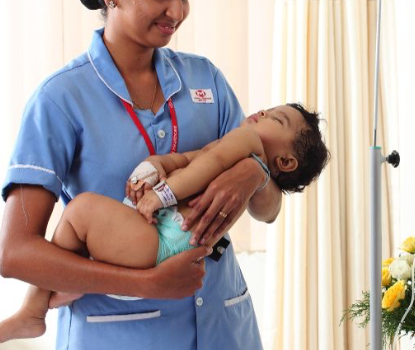








Coronavirus: Frontline Workers Lead The Way
November 30, 2020Blogs, ICU, Mother & ChildVishwaRaj Hospital prides itself in providing the best services for the most critical departments.Read More









Causes, Treatment, Options for Heart attack
November 30, 2020Blogs, ICU, Mother & ChildVishwaRaj Hospital prides itself in providing the best services for the most critical departments.Read More
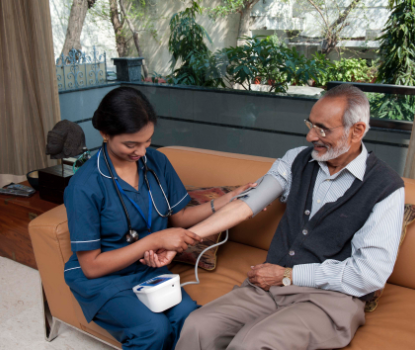
















Recent advance in joint pain Replacement
November 30, 2020Blogs, Mother & ChildVishwaRaj Hospital prides itself in providing the best services for the most critical departments.Read More

















Recent advance in joint pain Replacement
November 30, 2020Blogs, OrthopaedicVishwaRaj Hospital prides itself in providing the best services for the most critical departments.Read More
About Writter









Dr. Poonam Patil
Director-ICU & Medicine 9 Years of Working Experience The pacemaker is implanted just below the collarbone. There are three wires connected to the devices monitor that helps in detecting heart rate irregularities and in synchronizing the heart by emitting
Share this with
Last medically reviewed on September 24, 2018
VishwaRaj Hospital prides itself in providing the best services for the most critical departments.
Related Read
edit post
Blogs
November 30, 2020
Coronavirus: Frontline Workers Lead The Way
VishwaRaj Hospital prides itself in providing the best services for the most critical departments.
Real Heroes during Corornavirus Crisis
Our Heart Centre offers the most comprehensive care to patients suffering from various heart diseases. Our cardiologists and cardiovascular surgeons are well trained in evaluating, diagnosing and performing cardiovascular surgery in or order to treat patients suffering from heart rhythm disorders.
Staff at Jupiter Hospital implants hundreds of implantable devices to help people live a quality of life without worrying much about their heart.
What Is Cardiac Resynchronization Therapy (CRT)?
Cardiac resynchronization therapy (CRT), also termed as biventricular pacing, involves the use of a special kind of pacemaker known as a biventricular pacemaker – that works by sending small electrical impulses through the leads attached to it, in order to keep the right and left ventricles pumping together, called AV synchrony. It is designed to help the ventricles contract normally and improve the heart’s rhythm and symptoms associated with arrhythmia or heart failure.
How Does A Biventricular Pacemaker Works?
The pacemaker is implanted just below the collarbone. There are three wires connected to the devices monitor that helps in detecting heart rate irregularities and in synchronizing the heart by emitting tiny pulses of electricity to correct them.
Diagnostic Procedure
The doctor performs several tests to diagnose the find the cause of irregular heartbeats, before implanting a biventricular pacemaker. These tests are performed using:
blogTemplate
By adminNovember 30, 2020









Some quick content to read
When would I need a cardiologist? | What does cardiology involve?
Choosing a cardologist The Country Won’t Work Without Them. Stories of People Putting Their Lives on the Line to Help Others During Coronavirus
The novel coronavirus continues to wreak havoc across the globe, it comes as no surprise that the people who comprise of our best defence to contain and mitigate this epidemic also face the highest risk of becoming infected themselves. Be it our healthcare workers, the police and all those working for ‘essential’ services — they all run the risk of being exposed to the virus. Till date, countless frontline workers across the globe have shouldered this burden, and will continue to do so in the foreseeable future unless the virus is controlled.
We’ve all read stories of the shortage of surgical masks and other personal protective equipment which increase chances of contamination. But that’s not all. When our frontline workers stand to get infected, it leads to an increased burden on the already present, limited workers. As a part of the medical fraternity, I say this with confidence that we’re doing all we can to protect our family at the hospital.
From revising our protocols to increasing the supply of protective gear and even rotating our staff to minimise exposure, we’ve gone the extra mile. However, that’s not enough. We need you to step in and flatten the curve. By staying home, you’ll help lessen the burden on an already overwhelmed workforce. You’ll help curb the spread of coronavirus.
On behalf of the healthcare fraternity, we urge you to stay home and stay safe. It’s the only way we can beat this challenge together!
The real heroes are here…




































The term “frontline workers” often conjures images of doctors in Hazmat suits and soldiers in uniform. But during the coronavirus outbreak, workers across a vast array of industries have found themselves essential parts of the machine that keeps the world in motion, required to do their jobs despite great risk—whether hog farm employees or bus drivers, mental health counselors or police officers. Here, as part of TIME’s new issue, frontline workers of all types share their triumphs and fears in their own voices.
Related Read
edit post
Blogs
November 30, 2020
Coronavirus: Frontline Workers Lead The Way
VishwaRaj Hospital prides itself in providing the best services for the most critical departments.
Real Heroes during Corornavirus Crisis
Our Heart Centre offers the most comprehensive care to patients suffering from various heart diseases. Our cardiologists and cardiovascular surgeons are well trained in evaluating, diagnosing and performing cardiovascular surgery in or order to treat patients suffering from heart rhythm disorders.
Staff at Jupiter Hospital implants hundreds of implantable devices to help people live a quality of life without worrying much about their heart.
What Is Cardiac Resynchronization Therapy (CRT)?
Cardiac resynchronization therapy (CRT), also termed as biventricular pacing, involves the use of a special kind of pacemaker known as a biventricular pacemaker – that works by sending small electrical impulses through the leads attached to it, in order to keep the right and left ventricles pumping together, called AV synchrony. It is designed to help the ventricles contract normally and improve the heart’s rhythm and symptoms associated with arrhythmia or heart failure.
How Does A Biventricular Pacemaker Works?
The pacemaker is implanted just below the collarbone. There are three wires connected to the devices monitor that helps in detecting heart rate irregularities and in synchronizing the heart by emitting tiny pulses of electricity to correct them.
Diagnostic Procedure
The doctor performs several tests to diagnose the find the cause of irregular heartbeats, before implanting a biventricular pacemaker. These tests are performed using:
Featured in 10 Most Trusted Hospitals in Pune
For detailed information contact us
- 24/7 Support Team: 020 6760 6060
Expert Medical Team
VishwaRaj Hospital prides itself in providing the best services for the most critical departments. We are equipped with the best state-of-the-art technology,
Featured Blogs









Coronavirus: Frontline Workers Lead The Way
November 30, 2020Blogs, ICU, Mother & ChildVishwaRaj Hospital prides itself in providing the best services for the most critical departments.Read More









Causes, Treatment, Options for Heart attack
November 30, 2020Blogs, ICU, Mother & ChildVishwaRaj Hospital prides itself in providing the best services for the most critical departments.Read More

















Recent advance in joint pain Replacement
November 30, 2020Blogs, Mother & ChildVishwaRaj Hospital prides itself in providing the best services for the most critical departments.Read More

















Recent advance in joint pain Replacement
November 30, 2020Blogs, OrthopaedicVishwaRaj Hospital prides itself in providing the best services for the most critical departments.Read More
About Writter









Dr. Poonam Patil
Director-ICU & Medicine 9 Years of Working Experience The pacemaker is implanted just below the collarbone. There are three wires connected to the devices monitor that helps in detecting heart rate irregularities and in synchronizing the heart by emitting
Share this with
Last medically reviewed on September 24, 2018
VishwaRaj Hospital prides itself in providing the best services for the most critical departments.
Featured in 10 Most Trusted Hospitals in Pune
For detailed information contact us
- 24/7 Support Team: 020 6760 6060
Expert Medical Team
VishwaRaj Hospital prides itself in providing the best services for the most critical departments. We are equipped with the best state-of-the-art technology,
Featured Blogs









Coronavirus: Frontline Workers Lead The Way
November 30, 2020Blogs, ICU, Mother & ChildVishwaRaj Hospital prides itself in providing the best services for the most critical departments.Read More









Causes, Treatment, Options for Heart attack
November 30, 2020Blogs, ICU, Mother & ChildVishwaRaj Hospital prides itself in providing the best services for the most critical departments.Read More

















Recent advance in joint pain Replacement
November 30, 2020Blogs, Mother & ChildVishwaRaj Hospital prides itself in providing the best services for the most critical departments.Read More

















Recent advance in joint pain Replacement
November 30, 2020Blogs, OrthopaedicVishwaRaj Hospital prides itself in providing the best services for the most critical departments.Read More
About Writter









Dr. Poonam Patil
Director-ICU & Medicine
9 Years of Working Experience
The pacemaker is implanted just below the collarbone. There are three wires connected to the devices monitor that helps in detecting heart rate irregularities and in synchronizing the heart by emitting
Share this with
Last medically reviewed on September 24, 2018
VishwaRaj Hospital prides itself in providing the best services for the most critical departments.
Book Appointment
02067606060
Related Read
edit post
Blogs
November 30, 2020
Coronavirus: Frontline Workers Lead The Way
VishwaRaj Hospital prides itself in providing the best services for the most critical departments.
Real Heroes during Corornavirus Crisis
Our Heart Centre offers the most comprehensive care to patients suffering from various heart diseases. Our cardiologists and cardiovascular surgeons are well trained in evaluating, diagnosing and performing cardiovascular surgery in or order to treat patients suffering from heart rhythm disorders.
Staff at Jupiter Hospital implants hundreds of implantable devices to help people live a quality of life without worrying much about their heart.
What Is Cardiac Resynchronization Therapy (CRT)?
Cardiac resynchronization therapy (CRT), also termed as biventricular pacing, involves the use of a special kind of pacemaker known as a biventricular pacemaker – that works by sending small electrical impulses through the leads attached to it, in order to keep the right and left ventricles pumping together, called AV synchrony. It is designed to help the ventricles contract normally and improve the heart’s rhythm and symptoms associated with arrhythmia or heart failure.
How Does A Biventricular Pacemaker Works?
The pacemaker is implanted just below the collarbone. There are three wires connected to the devices monitor that helps in detecting heart rate irregularities and in synchronizing the heart by emitting tiny pulses of electricity to correct them.
Diagnostic Procedure
The doctor performs several tests to diagnose the find the cause of irregular heartbeats, before implanting a biventricular pacemaker. These tests are performed using:
Featured in 10 Most Trusted Hospitals in Pune
For detailed information contact us
- 24/7 Support Team: 020 6760 6060
Expert Medical Team
VishwaRaj Hospital prides itself in providing the best services for the most critical departments. We are equipped with the best state-of-the-art technology,
Featured Blogs









Coronavirus: Frontline Workers Lead The Way
November 30, 2020Blogs, ICU, Mother & ChildVishwaRaj Hospital prides itself in providing the best services for the most critical departments.Read More









Causes, Treatment, Options for Heart attack
November 30, 2020Blogs, ICU, Mother & ChildVishwaRaj Hospital prides itself in providing the best services for the most critical departments.Read More

















Recent advance in joint pain Replacement
November 30, 2020Blogs, Mother & ChildVishwaRaj Hospital prides itself in providing the best services for the most critical departments.Read More

















Recent advance in joint pain Replacement
November 30, 2020Blogs, OrthopaedicVishwaRaj Hospital prides itself in providing the best services for the most critical departments.Read More
About Writter









Dr. Poonam Patil
Director-ICU & Medicine 9 Years of Working Experience The pacemaker is implanted just below the collarbone. There are three wires connected to the devices monitor that helps in detecting heart rate irregularities and in synchronizing the heart by emitting [likebtn theme=”custom” icon_l_url=”http://vishwarajhospital.com/wp-content/uploads/2020/11/clap-e1606746117316.png#6411″ icon_d_c_v=”#004ea3″ label_c=”#004ea3″ label_c_v=”#004ea3″ dislike_enabled=”0″ icon_dislike_show=”0″ tooltip_enabled=”0″ i18n_like=”Give us a clap” white_label=”1″ popup_disabled=”1″ voting_enabled=”0″ counter_clickable=”1″ share_enabled=”0″ bp_notify=”0″]
Share this with
Last medically reviewed on September 24, 2018
VishwaRaj Hospital prides itself in providing the best services for the most critical departments.
Related Read
Warning: Trying to access array offset on value of type null in /home/drr41ih765mp/public_html/wp-content/plugins/jblog-elements/includes/class/elements/views/view-abstract.php on line 142
Warning: Trying to access array offset on value of type null in /home/drr41ih765mp/public_html/wp-content/plugins/jblog-elements/includes/class/elements/views/view-abstract.php on line 142
Milestone Moments: Celebrating 8 Years of Excellence at MAEER’S VishwaRaj Hospital
Milestone Moments: Celebrating 8 Years of Excellence at MAEER'S VishwaRaj Hospital 🎉 Celebrating a Milestone 🎉 On April 3rd, 2024, ...
Real Heroes during Corornavirus Crisis
Our Heart Centre offers the most comprehensive care to patients suffering from various heart diseases. Our cardiologists and cardiovascular surgeons are well trained in evaluating, diagnosing and performing cardiovascular surgery in or order to treat patients suffering from heart rhythm disorders.
Staff at Jupiter Hospital implants hundreds of implantable devices to help people live a quality of life without worrying much about their heart.
What Is Cardiac Resynchronization Therapy (CRT)?
Cardiac resynchronization therapy (CRT), also termed as biventricular pacing, involves the use of a special kind of pacemaker known as a biventricular pacemaker – that works by sending small electrical impulses through the leads attached to it, in order to keep the right and left ventricles pumping together, called AV synchrony. It is designed to help the ventricles contract normally and improve the heart’s rhythm and symptoms associated with arrhythmia or heart failure.
How Does A Biventricular Pacemaker Works?
The pacemaker is implanted just below the collarbone. There are three wires connected to the devices monitor that helps in detecting heart rate irregularities and in synchronizing the heart by emitting tiny pulses of electricity to correct them.
Diagnostic Procedure
The doctor performs several tests to diagnose the find the cause of irregular heartbeats, before implanting a biventricular pacemaker. These tests are performed using:
blogTemplate
By adminNovember 30, 20207 min read









Some quick content to read
When would I need a cardiologist? | What does cardiology involve?
Choosing a cardologist The Country Won’t Work Without Them. Stories of People Putting Their Lives on the Line to Help Others During Coronavirus
The novel coronavirus continues to wreak havoc across the globe, it comes as no surprise that the people who comprise of our best defence to contain and mitigate this epidemic also face the highest risk of becoming infected themselves. Be it our healthcare workers, the police and all those working for ‘essential’ services — they all run the risk of being exposed to the virus. Till date, countless frontline workers across the globe have shouldered this burden, and will continue to do so in the foreseeable future unless the virus is controlled.
We’ve all read stories of the shortage of surgical masks and other personal protective equipment which increase chances of contamination. But that’s not all. When our frontline workers stand to get infected, it leads to an increased burden on the already present, limited workers. As a part of the medical fraternity, I say this with confidence that we’re doing all we can to protect our family at the hospital.
From revising our protocols to increasing the supply of protective gear and even rotating our staff to minimise exposure, we’ve gone the extra mile. However, that’s not enough. We need you to step in and flatten the curve. By staying home, you’ll help lessen the burden on an already overwhelmed workforce. You’ll help curb the spread of coronavirus.
On behalf of the healthcare fraternity, we urge you to stay home and stay safe. It’s the only way we can beat this challenge together!
The real heroes are here…




































The term “frontline workers” often conjures images of doctors in Hazmat suits and soldiers in uniform. But during the coronavirus outbreak, workers across a vast array of industries have found themselves essential parts of the machine that keeps the world in motion, required to do their jobs despite great risk—whether hog farm employees or bus drivers, mental health counselors or police officers. Here, as part of TIME’s new issue, frontline workers of all types share their triumphs and fears in their own voices.
blogTemplate
By adminNovember 30, 20207 min read









Some quick content to read
When would I need a cardiologist? | What does cardiology involve?
Choosing a cardologist
The Country Won’t Work Without Them. Stories of People Putting Their Lives on the Line to Help Others During Coronavirus
The novel coronavirus continues to wreak havoc across the globe, it comes as no surprise that the people who comprise of our best defence to contain and mitigate this epidemic also face the highest risk of becoming infected themselves. Be it our healthcare workers, the police and all those working for ‘essential’ services — they all run the risk of being exposed to the virus. Till date, countless frontline workers across the globe have shouldered this burden, and will continue to do so in the foreseeable future unless the virus is controlled.
We’ve all read stories of the shortage of surgical masks and other personal protective equipment which increase chances of contamination. But that’s not all. When our frontline workers stand to get infected, it leads to an increased burden on the already present, limited workers. As a part of the medical fraternity, I say this with confidence that we’re doing all we can to protect our family at the hospital.
From revising our protocols to increasing the supply of protective gear and even rotating our staff to minimise exposure, we’ve gone the extra mile. However, that’s not enough. We need you to step in and flatten the curve. By staying home, you’ll help lessen the burden on an already overwhelmed workforce. You’ll help curb the spread of coronavirus.
On behalf of the healthcare fraternity, we urge you to stay home and stay safe. It’s the only way we can beat this challenge together!
The real heroes are here…




































The term “frontline workers” often conjures images of doctors in Hazmat suits and soldiers in uniform. But during the coronavirus outbreak, workers across a vast array of industries have found themselves essential parts of the machine that keeps the world in motion, required to do their jobs despite great risk—whether hog farm employees or bus drivers, mental health counselors or police officers. Here, as part of TIME’s new issue, frontline workers of all types share their triumphs and fears in their own voices.
blogTemplate
By adminNovember 30, 2020









Some quick content to read
When would I need a cardiologist? | What does cardiology involve?
Choosing a cardologist The Country Won’t Work Without Them. Stories of People Putting Their Lives on the Line to Help Others During Coronavirus
The novel coronavirus continues to wreak havoc across the globe, it comes as no surprise that the people who comprise of our best defence to contain and mitigate this epidemic also face the highest risk of becoming infected themselves. Be it our healthcare workers, the police and all those working for ‘essential’ services — they all run the risk of being exposed to the virus. Till date, countless frontline workers across the globe have shouldered this burden, and will continue to do so in the foreseeable future unless the virus is controlled.
We’ve all read stories of the shortage of surgical masks and other personal protective equipment which increase chances of contamination. But that’s not all. When our frontline workers stand to get infected, it leads to an increased burden on the already present, limited workers. As a part of the medical fraternity, I say this with confidence that we’re doing all we can to protect our family at the hospital.
From revising our protocols to increasing the supply of protective gear and even rotating our staff to minimise exposure, we’ve gone the extra mile. However, that’s not enough. We need you to step in and flatten the curve. By staying home, you’ll help lessen the burden on an already overwhelmed workforce. You’ll help curb the spread of coronavirus.
On behalf of the healthcare fraternity, we urge you to stay home and stay safe. It’s the only way we can beat this challenge together!
The real heroes are here…




































The term “frontline workers” often conjures images of doctors in Hazmat suits and soldiers in uniform. But during the coronavirus outbreak, workers across a vast array of industries have found themselves essential parts of the machine that keeps the world in motion, required to do their jobs despite great risk—whether hog farm employees or bus drivers, mental health counselors or police officers. Here, as part of TIME’s new issue, frontline workers of all types share their triumphs and fears in their own voices.
Related Read
edit post
Blogs
November 30, 2020
Coronavirus: Frontline Workers Lead The Way
VishwaRaj Hospital prides itself in providing the best services for the most critical departments.
Real Heroes during Corornavirus Crisis
Our Heart Centre offers the most comprehensive care to patients suffering from various heart diseases. Our cardiologists and cardiovascular surgeons are well trained in evaluating, diagnosing and performing cardiovascular surgery in or order to treat patients suffering from heart rhythm disorders.
Staff at Jupiter Hospital implants hundreds of implantable devices to help people live a quality of life without worrying much about their heart.
What Is Cardiac Resynchronization Therapy (CRT)?
Cardiac resynchronization therapy (CRT), also termed as biventricular pacing, involves the use of a special kind of pacemaker known as a biventricular pacemaker – that works by sending small electrical impulses through the leads attached to it, in order to keep the right and left ventricles pumping together, called AV synchrony. It is designed to help the ventricles contract normally and improve the heart’s rhythm and symptoms associated with arrhythmia or heart failure.
How Does A Biventricular Pacemaker Works?
The pacemaker is implanted just below the collarbone. There are three wires connected to the devices monitor that helps in detecting heart rate irregularities and in synchronizing the heart by emitting tiny pulses of electricity to correct them.
Diagnostic Procedure
The doctor performs several tests to diagnose the find the cause of irregular heartbeats, before implanting a biventricular pacemaker. These tests are performed using:
Featured in 10 Most Trusted Hospitals in Pune
For detailed information contact us
- 24/7 Support Team: 020 6760 6060
Expert Medical Team
VishwaRaj Hospital prides itself in providing the best services for the most critical departments. We are equipped with the best state-of-the-art technology,
Featured Blogs









Coronavirus: Frontline Workers Lead The Way
November 30, 2020Blogs, ICU, Mother & ChildVishwaRaj Hospital prides itself in providing the best services for the most critical departments.Read More









Causes, Treatment, Options for Heart attack
November 30, 2020Blogs, ICU, Mother & ChildVishwaRaj Hospital prides itself in providing the best services for the most critical departments.Read More

















Recent advance in joint pain Replacement
November 30, 2020Blogs, Mother & ChildVishwaRaj Hospital prides itself in providing the best services for the most critical departments.Read More

















Recent advance in joint pain Replacement
November 30, 2020Blogs, OrthopaedicVishwaRaj Hospital prides itself in providing the best services for the most critical departments.Read More
About Writter









Dr. Poonam Patil
Director-ICU & Medicine 9 Years of Working Experience The pacemaker is implanted just below the collarbone. There are three wires connected to the devices monitor that helps in detecting heart rate irregularities and in synchronizing the heart by emitting
Share this with
Last medically reviewed on September 24, 2018
VishwaRaj Hospital prides itself in providing the best services for the most critical departments.
Related Read
edit post
Blogs
November 30, 2020
Coronavirus: Frontline Workers Lead The Way
VishwaRaj Hospital prides itself in providing the best services for the most critical departments.
Real Heroes during Corornavirus Crisis
Our Heart Centre offers the most comprehensive care to patients suffering from various heart diseases. Our cardiologists and cardiovascular surgeons are well trained in evaluating, diagnosing and performing cardiovascular surgery in or order to treat patients suffering from heart rhythm disorders.
Staff at Jupiter Hospital implants hundreds of implantable devices to help people live a quality of life without worrying much about their heart.
What Is Cardiac Resynchronization Therapy (CRT)?
Cardiac resynchronization therapy (CRT), also termed as biventricular pacing, involves the use of a special kind of pacemaker known as a biventricular pacemaker – that works by sending small electrical impulses through the leads attached to it, in order to keep the right and left ventricles pumping together, called AV synchrony. It is designed to help the ventricles contract normally and improve the heart’s rhythm and symptoms associated with arrhythmia or heart failure.
How Does A Biventricular Pacemaker Works?
The pacemaker is implanted just below the collarbone. There are three wires connected to the devices monitor that helps in detecting heart rate irregularities and in synchronizing the heart by emitting tiny pulses of electricity to correct them.
Diagnostic Procedure
The doctor performs several tests to diagnose the find the cause of irregular heartbeats, before implanting a biventricular pacemaker. These tests are performed using:
blogTemplate
By adminNovember 30, 2020









Some quick content to read
When would I need a cardiologist? | What does cardiology involve?
Choosing a cardologist The Country Won’t Work Without Them. Stories of People Putting Their Lives on the Line to Help Others During Coronavirus
The novel coronavirus continues to wreak havoc across the globe, it comes as no surprise that the people who comprise of our best defence to contain and mitigate this epidemic also face the highest risk of becoming infected themselves. Be it our healthcare workers, the police and all those working for ‘essential’ services — they all run the risk of being exposed to the virus. Till date, countless frontline workers across the globe have shouldered this burden, and will continue to do so in the foreseeable future unless the virus is controlled.
We’ve all read stories of the shortage of surgical masks and other personal protective equipment which increase chances of contamination. But that’s not all. When our frontline workers stand to get infected, it leads to an increased burden on the already present, limited workers. As a part of the medical fraternity, I say this with confidence that we’re doing all we can to protect our family at the hospital.
From revising our protocols to increasing the supply of protective gear and even rotating our staff to minimise exposure, we’ve gone the extra mile. However, that’s not enough. We need you to step in and flatten the curve. By staying home, you’ll help lessen the burden on an already overwhelmed workforce. You’ll help curb the spread of coronavirus.
On behalf of the healthcare fraternity, we urge you to stay home and stay safe. It’s the only way we can beat this challenge together!
The real heroes are here…




































The term “frontline workers” often conjures images of doctors in Hazmat suits and soldiers in uniform. But during the coronavirus outbreak, workers across a vast array of industries have found themselves essential parts of the machine that keeps the world in motion, required to do their jobs despite great risk—whether hog farm employees or bus drivers, mental health counselors or police officers. Here, as part of TIME’s new issue, frontline workers of all types share their triumphs and fears in their own voices.
Related Read
edit post
Blogs
November 30, 2020
Coronavirus: Frontline Workers Lead The Way
VishwaRaj Hospital prides itself in providing the best services for the most critical departments.
Real Heroes during Corornavirus Crisis
Our Heart Centre offers the most comprehensive care to patients suffering from various heart diseases. Our cardiologists and cardiovascular surgeons are well trained in evaluating, diagnosing and performing cardiovascular surgery in or order to treat patients suffering from heart rhythm disorders.
Staff at Jupiter Hospital implants hundreds of implantable devices to help people live a quality of life without worrying much about their heart.
What Is Cardiac Resynchronization Therapy (CRT)?
Cardiac resynchronization therapy (CRT), also termed as biventricular pacing, involves the use of a special kind of pacemaker known as a biventricular pacemaker – that works by sending small electrical impulses through the leads attached to it, in order to keep the right and left ventricles pumping together, called AV synchrony. It is designed to help the ventricles contract normally and improve the heart’s rhythm and symptoms associated with arrhythmia or heart failure.
How Does A Biventricular Pacemaker Works?
The pacemaker is implanted just below the collarbone. There are three wires connected to the devices monitor that helps in detecting heart rate irregularities and in synchronizing the heart by emitting tiny pulses of electricity to correct them.
Diagnostic Procedure
The doctor performs several tests to diagnose the find the cause of irregular heartbeats, before implanting a biventricular pacemaker. These tests are performed using:
Featured in 10 Most Trusted Hospitals in Pune
For detailed information contact us
- 24/7 Support Team: 020 6760 6060
Expert Medical Team
VishwaRaj Hospital prides itself in providing the best services for the most critical departments. We are equipped with the best state-of-the-art technology,
Featured Blogs









Coronavirus: Frontline Workers Lead The Way
November 30, 2020Blogs, ICU, Mother & ChildVishwaRaj Hospital prides itself in providing the best services for the most critical departments.Read More









Causes, Treatment, Options for Heart attack
November 30, 2020Blogs, ICU, Mother & ChildVishwaRaj Hospital prides itself in providing the best services for the most critical departments.Read More

















Recent advance in joint pain Replacement
November 30, 2020Blogs, Mother & ChildVishwaRaj Hospital prides itself in providing the best services for the most critical departments.Read More

















Recent advance in joint pain Replacement
November 30, 2020Blogs, OrthopaedicVishwaRaj Hospital prides itself in providing the best services for the most critical departments.Read More
About Writter









Dr. Poonam Patil
Director-ICU & Medicine 9 Years of Working Experience The pacemaker is implanted just below the collarbone. There are three wires connected to the devices monitor that helps in detecting heart rate irregularities and in synchronizing the heart by emitting
Share this with
Last medically reviewed on September 24, 2018
VishwaRaj Hospital prides itself in providing the best services for the most critical departments.
Featured in 10 Most Trusted Hospitals in Pune
For detailed information contact us
- 24/7 Support Team: 020 6760 6060
Expert Medical Team
VishwaRaj Hospital prides itself in providing the best services for the most critical departments. We are equipped with the best state-of-the-art technology,
Featured Blogs









Coronavirus: Frontline Workers Lead The Way
November 30, 2020Blogs, ICU, Mother & ChildVishwaRaj Hospital prides itself in providing the best services for the most critical departments.Read More









Causes, Treatment, Options for Heart attack
November 30, 2020Blogs, ICU, Mother & ChildVishwaRaj Hospital prides itself in providing the best services for the most critical departments.Read More

















Recent advance in joint pain Replacement
November 30, 2020Blogs, Mother & ChildVishwaRaj Hospital prides itself in providing the best services for the most critical departments.Read More

















Recent advance in joint pain Replacement
November 30, 2020Blogs, OrthopaedicVishwaRaj Hospital prides itself in providing the best services for the most critical departments.Read More
About Writter









Dr. Poonam Patil
Director-ICU & Medicine
9 Years of Working Experience
The pacemaker is implanted just below the collarbone. There are three wires connected to the devices monitor that helps in detecting heart rate irregularities and in synchronizing the heart by emitting
Share this with
Last medically reviewed on September 24, 2018
VishwaRaj Hospital prides itself in providing the best services for the most critical departments.
Book Appointment
02067606060
Related Read
edit post
Blogs
November 30, 2020
Coronavirus: Frontline Workers Lead The Way
VishwaRaj Hospital prides itself in providing the best services for the most critical departments.
Real Heroes during Corornavirus Crisis
Our Heart Centre offers the most comprehensive care to patients suffering from various heart diseases. Our cardiologists and cardiovascular surgeons are well trained in evaluating, diagnosing and performing cardiovascular surgery in or order to treat patients suffering from heart rhythm disorders.
Staff at Jupiter Hospital implants hundreds of implantable devices to help people live a quality of life without worrying much about their heart.
What Is Cardiac Resynchronization Therapy (CRT)?
Cardiac resynchronization therapy (CRT), also termed as biventricular pacing, involves the use of a special kind of pacemaker known as a biventricular pacemaker – that works by sending small electrical impulses through the leads attached to it, in order to keep the right and left ventricles pumping together, called AV synchrony. It is designed to help the ventricles contract normally and improve the heart’s rhythm and symptoms associated with arrhythmia or heart failure.
How Does A Biventricular Pacemaker Works?
The pacemaker is implanted just below the collarbone. There are three wires connected to the devices monitor that helps in detecting heart rate irregularities and in synchronizing the heart by emitting tiny pulses of electricity to correct them.
Diagnostic Procedure
The doctor performs several tests to diagnose the find the cause of irregular heartbeats, before implanting a biventricular pacemaker. These tests are performed using:
Featured in 10 Most Trusted Hospitals in Pune
For detailed information contact us
- 24/7 Support Team: 020 6760 6060
Expert Medical Team
VishwaRaj Hospital prides itself in providing the best services for the most critical departments. We are equipped with the best state-of-the-art technology,
Featured Blogs









Coronavirus: Frontline Workers Lead The Way
November 30, 2020Blogs, ICU, Mother & ChildVishwaRaj Hospital prides itself in providing the best services for the most critical departments.Read More









Causes, Treatment, Options for Heart attack
November 30, 2020Blogs, ICU, Mother & ChildVishwaRaj Hospital prides itself in providing the best services for the most critical departments.Read More

















Recent advance in joint pain Replacement
November 30, 2020Blogs, Mother & ChildVishwaRaj Hospital prides itself in providing the best services for the most critical departments.Read More

















Recent advance in joint pain Replacement
November 30, 2020Blogs, OrthopaedicVishwaRaj Hospital prides itself in providing the best services for the most critical departments.Read More
About Writter









Dr. Poonam Patil
Director-ICU & Medicine 9 Years of Working Experience The pacemaker is implanted just below the collarbone. There are three wires connected to the devices monitor that helps in detecting heart rate irregularities and in synchronizing the heart by emitting [likebtn theme=”custom” icon_l_url=”http://vishwarajhospital.com/wp-content/uploads/2020/11/clap-e1606746117316.png#6411″ icon_d_c_v=”#004ea3″ label_c=”#004ea3″ label_c_v=”#004ea3″ dislike_enabled=”0″ icon_dislike_show=”0″ tooltip_enabled=”0″ i18n_like=”Give us a clap” white_label=”1″ popup_disabled=”1″ voting_enabled=”0″ counter_clickable=”1″ share_enabled=”0″ bp_notify=”0″]
Share this with
Last medically reviewed on September 24, 2018
VishwaRaj Hospital prides itself in providing the best services for the most critical departments.
Featured in 10 Most Trusted Hospitals in Pune
For detailed information contact us
- 24/7 Support Team: 020 6760 6060
Expert Medical Team
VishwaRaj Hospital prides itself in providing the best services for the most critical departments. We are equipped with the best state-of-the-art technology,
Featured Blogs
About Writter


Dr. Poonam Patil
Share this with
Last medically reviewed on September 24, 2018







